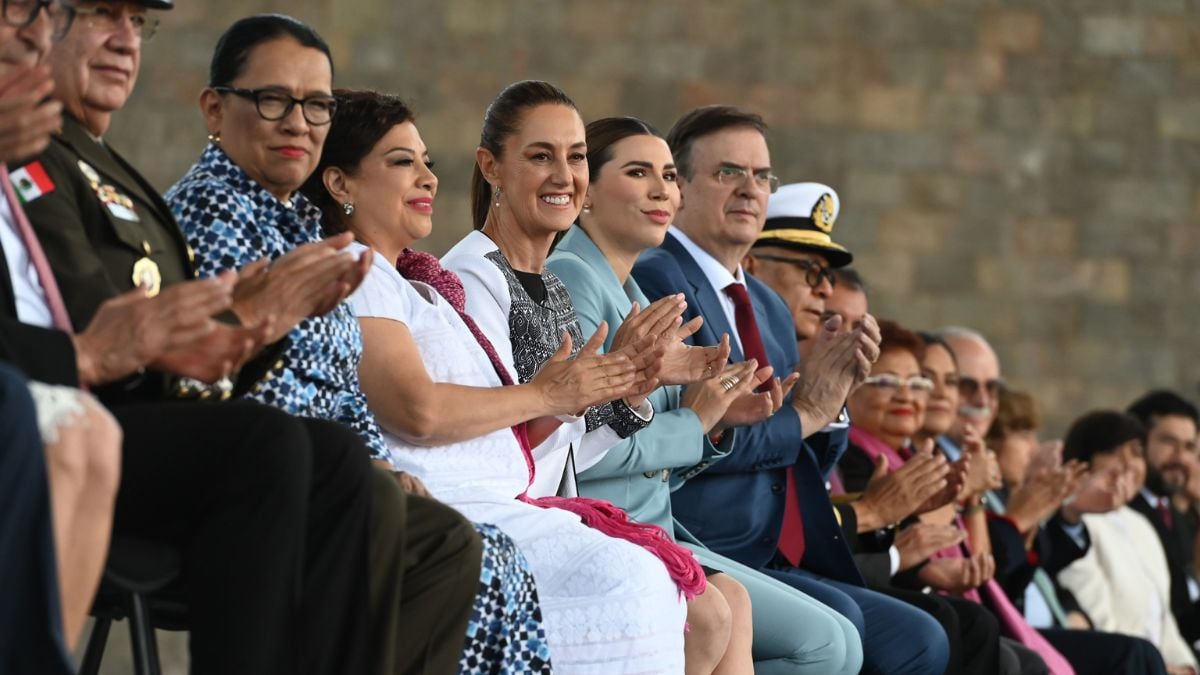
Mexico’s President, Claudia Sheinbaum Pardo, presented an updated version of the “Plan Mexico” during an event held at the National Museum of Anthropology. The strategy includes 18 key actions focused on energy sovereignty, boosting domestic industry, strengthening social programs, and modernizing infrastructure.
This update to Plan Mexico was presented following the tariff exemptions granted by the United States to other countries, which allowed the continuation of Mexico’s export momentum without additional barriers. President Sheinbaum emphasized that the plan not only responds to external dynamics but also reinforces the domestic market, popular economy, and social rights.
According to figures presented, Mexico reached a historic record in March 2025 with 22,465,110 jobs registered with the IMSS, consolidating its economic strength. International reserves also hit a record high of $237 billion, and inflation stood at 3.67%, one of the lowest levels since the pandemic.
READ ALSO. This is Donald Trump’s reciprocal tariffs chart
What are the 18 programs of Plan Mexico announced by Sheinbaum?
The 18 pillars of Plan Mexico cover different strategic sectors and reflect a comprehensive vision of economic and social development. They are summarized as follows:
- Food sovereignty: Increase national production of corn, beans, rice, milk, and other products with guaranteed prices and programs like “Harvesting Sovereignty.”
- Energy sovereignty: Promote self-sufficiency in gasoline, diesel, and electricity, with a 30% increase in power generation and expansion of renewable energies.
- Acceleration of public works: Maintenance of 44,000 km of highways, construction of an additional 1,970 km, 11 traffic interchanges, and 114 artisanal roads.
- Housing and credits: Construction of one million social housing units by 2030 and regularization of 4.4 million unpayable loans.
- National consumer industry: Replace imports with local production in sectors such as textiles, furniture, toys, and aluminum, with a goal of recovering 50,000 jobs.
- Domestic vehicle production: Initiative to ensure that “the best-selling cars in Mexico are made in Mexico,” with a goal of increasing national production by 10%.
- Pharmaceutical and medical equipment industry: Public procurement conditioned on having production facilities in Mexico, streamlined COFEPRIS procedures, and promotion of domestic investment.
- Petrochemical and fertilizer industry: Joint projects with PEMEX to produce 90% of fertilizers within national territory.
- Public procurement with national content: New procurement law requiring at least 65% national content in government purchases.
- Increase of Mexican products in retail stores: Agreement with retail chains to ensure at least 10% of their offerings are made in Mexico.
- Investment portfolio and single window: Digital platform with $298.061 billion in registered investments and 50% fewer procedures.
- 15 welfare hubs: With tax incentives and industry stimulus (e.g., circular economy); the first project to be tendered on May 19.
- Job creation: Target of 100,000 new jobs through job fairs, employment platforms, and programs like “Youths Building the Future.”
- Support for micro and small businesses: Financing program to facilitate their inclusion in productive value chains.
- Investment in science and technology: Focus on electric vehicles, semiconductors, satellites, and artificial intelligence.
- Renewal of the PACIC: Anti-inflation package to maintain the prices of 24 staple products with participation from producers and retailers.
- Minimum wage: Commitment to increase it to the equivalent of 2.5 basic baskets by 2030.
- Welfare programs: Existing social programs will be maintained and expanded, with new initiatives such as pensions for women aged 60–64, universal scholarships, and home healthcare services.
READ ALSO. Why did Mexico receive preferential treatment under Trump’s tariffs?
What role will infrastructure play in economic development?
One of the pillars of Plan Mexico is investment in public infrastructure, with a strategy that includes not only roads but also ports, airports, trains, schools, and hospitals. Key projects include:
- Rehabilitation and improvement of 60 airports with an investment of 35 billion pesos.
- Expansion of 11 strategic ports.
- Launch of passenger trains from CDMX to Pachuca and CDMX to Querétaro, in addition to a cargo line for the Maya Train.
- Construction of seven mixed-investment projects for highways and bridges.
- Social infrastructure with 33 billion pesos allocated to schools, hospitals, and indigenous communities.
These projects together will generate over 500,000 direct jobs in 2025 and benefit more than 31 million people, especially through water and sanitation-related initiatives.
Social programs and welfare
Claudia Sheinbaum reaffirmed the government’s commitment to a “welfare floor” by announcing an investment of 835.534 billion pesos in social programs for 2025. She highlighted that 89% of households in Mexico receive some form of federal support, with more than 31 million beneficiaries.
Among the new programs are:
- Women’s Welfare Pension: for women aged 60 to 64.
- Rita Cetina Scholarship: a universal scholarship for primary and secondary school children.
- Health House-to-House: home healthcare services for seniors and people with disabilities.
Other programs like “Our School,” “Sowing Life,” “WellFishing,” “Production for Wellbeing,” and “Youths Building the Future” will also be strengthened.
Despite positive actions, the president acknowledged that “some issues with the United States remain unresolved,” such as tariff negotiations in key sectors like automotive, steel, and aluminum. The Mexican strategy focuses on reducing dependence on imports from countries without trade agreements and strengthening its industrial base.
👉 Follow us on Google News.
Plan_México_strengthening_the_economy_and_welfare_April_3 by lislas










